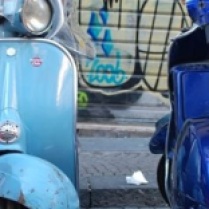
Since NFTs – Non-Fungible Tokens – came on the scene, they have redefined art. The largest groundbreaking development for the art industry of the last 100 years, it is a digitally owned piece of art that represents real-world objects like images, music, in-game items and videos. Held in the blockchain, it cannot be copied or deleted and, one could argue, offers a safer alternative to storing art in a vault as well as introducing a new way to buy and sell it.
A few days ago, Sotheby’s unveiled a replica of its London H.Q. in the blockchain world Decentraland. A Sotheby’s first, it even has an avatar of commissionaire Hans Lomulder who welcomes visitors to the virtual gallery. Created in 2015, Decentraland is a virtual reality blockchain platform where users create avatars to interact with one another, purchase goods and services, and create art.
Sotheby’s are embracing this new digital art realm. On redefining digital ownership and scarcity, Sotheby’s recently said: “For an asset to be non-fungible, it requires some form of scarcity or uniqueness. This has never been possible online in a sustainable, scalable way 一 until NFTs. Scarcity is notoriously difficult online. Content flows too freely; it is too easily copied, replicated, shared, and distributed. This is something we can recognise first hand. It is remarkably simple to distribute content 一 including artwork 一 online, creating an abundance of media that exposes us to digital art but hinders us from attaching value to it.”
Art, but not as we know it
For art galleries suffering the aftermath of a global lockdown, NFTs have created profit raised out of nowhere that has helped recover some of the losses. Like a rabbit pulled out of a hat. The Uffizi have recently sold famous art assets on the wall uploaded in the form of a digital facsimile, such as Michelangelo’s Doni Tondo, for a hefty sum of $170,000. The work was purchased by an Italian lady as a birthday gift for her art collector husband, as reported by Italian newspaper Corriere della Sera.
For the NFT sale, the Uffizi is working with Cinello, an Italy based company who create solutions for the digital sale of masterpieces, known as DAW (Digital Art Work). Each DAW is designed in the exact same proportions as the original work and encrypted so it’s impossible to duplicate. It is also accompanied by its NFT token and a certificate awarded by the gallery to certify its authenticity. Inspired by such a lucrative, and financially necessary move, the Uffizi is hoping to sell even more masterpieces as NFTs, including Botticelli’s The Birth of Venus.
Imagine the lucrative NFT profits for art galleries around the world, including the Louvre, MOMA and The Vatican Museums. If it means raising funds to save the livelihood of art galleries and associated staff, surely it’s a good thing.
Read the full article at NewsGateNY

NewsGateNY is a media platform which collects stories about the world’s most extraordinary business people
Words by Nicola Ferlei-Brown
Image credit: @Surface
















